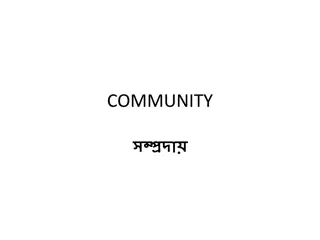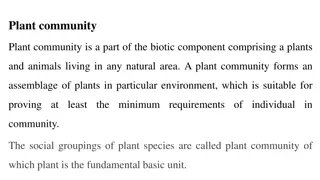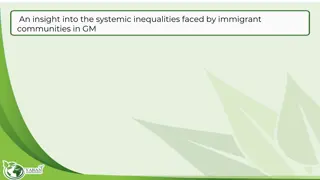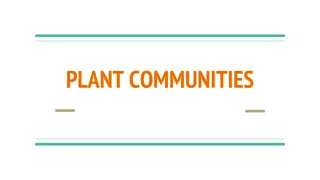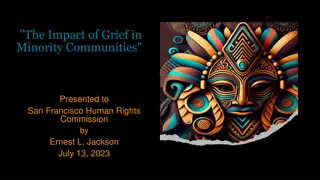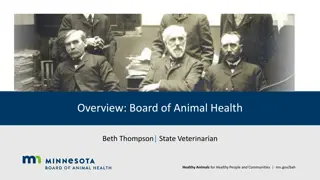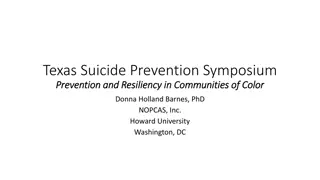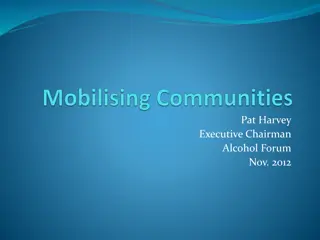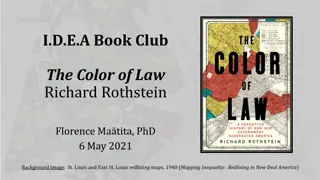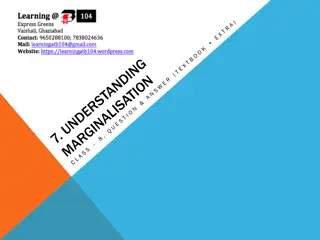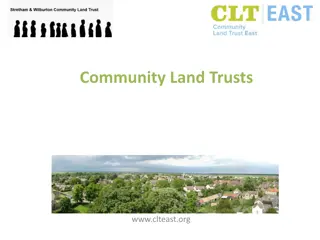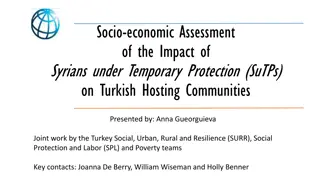Redlining and Its Impact on Communities
Redlining, a historical practice of denying services or goods based on discriminatory reasons, particularly affects property values and homeownership. This systematic denial led to neighborhoods falling into decline due to lack of access to loans. Discriminatory practices isolated minority communities, resulting in concentrated poverty and higher crime rates. The impact of redlining continues today, affecting housing and employment opportunities in affected areas.
Download Presentation

Please find below an Image/Link to download the presentation.
The content on the website is provided AS IS for your information and personal use only. It may not be sold, licensed, or shared on other websites without obtaining consent from the author.If you encounter any issues during the download, it is possible that the publisher has removed the file from their server.
You are allowed to download the files provided on this website for personal or commercial use, subject to the condition that they are used lawfully. All files are the property of their respective owners.
The content on the website is provided AS IS for your information and personal use only. It may not be sold, licensed, or shared on other websites without obtaining consent from the author.
E N D
Presentation Transcript
REDLINING & PROPERTY OWNERSHIP Student Health & Human Services Office of Human Relations, Diversity & Equity June 2022
WOULD YOU RATHER... Go scuba diving Go parasailing
WHAT IS REDLINING? In general, redlining is the systematic denial of various services or goods by the government or the private sector, either directly or by selectively raising prices. It is referred to most commonly when referring to property values and home ownership.
THE DISTURBING HISTORY OF THE SUBURBS
The video talks about segregation and how it continues today. In what ways do you agree or disagree with this? LET'S CHAT
THE HISTORY This term became known in the 1930's, as it was the color used on financial maps by the Home Owner's Loan Corporation to identify a hazardous areas with low property values. Communities with Germans, Scots, Italians, Blacks, Jews, Mexicans, Russians, immigrants, Japanese and other Asians were considered hazardous.
THE HISTORY Banks would not lend money for people to buy, maintain or improve homes or businesses in redlined areas. Neighborhoods fell into a vicious cycle of decline the inability to access loans led to disrepair which in turn reinforced the redline designation. Prior to the Fair Housing Act of 1968, there were no specific laws that protected minority populations from discriminatory practices in housing and commercial markets.
People were stuck. THE IMPACT Even if they had money, they couldn t necessarily move. Homeowners in some other areas were prohibited to selling their homes to Jews, people of color, and immigrants. Redlining and discriminatory practices isolated minority communities and reduced housing and employment opportunities, which led to concentrated poverty and higher violent crime rates.
To combat the violent crime, increased policing resulted in more arrests and murders of unarmed civilians. THE IMPACT Neighborhoods with a high proportion of minority residents were also more likely to be redlined than other neighborhoods with similar household incomes, housing age and type, and other determinants of risk, but which contained a different racial composition.
LET'S CHAT In what ways can you still see the impact of redlining today?
THE FAIR HOUSING ACT OF 1968 Attempted to mitigate the negative impacts that discriminatory practices like redlining had on minority populations. Signed by President Lyndon B. Johnson as a follow-up to the Civil Rights Act of 1964, this legislation prohibited discrimination in the sale, rental, and financing of housing based on race, religion, national origin, sex, handicap and familial status.
HUMAN RELATIONS, DIVERSITY & EQUITY
TEACHER SURVEY

 undefined
undefined
















